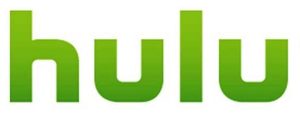Inside Hulu’s Live Streaming TV Workflow: Bitrates, CDNs and Playback
 With Hulu’s new live TV service now in public beta, I’m getting a lot of questions on how the service works from a video workflow standpoint and what Hulu’s done on the backend to make it all happen. I had the chance to spend some time with Hulu’s CTO and was also in the private beta the week before the service launched and have compiled some technical details I can now share.
With Hulu’s new live TV service now in public beta, I’m getting a lot of questions on how the service works from a video workflow standpoint and what Hulu’s done on the backend to make it all happen. I had the chance to spend some time with Hulu’s CTO and was also in the private beta the week before the service launched and have compiled some technical details I can now share.
From ingestion through distribution, Hulu’s using multiple third-party vendors in their video stack, but has also build some of the pieces of the platform in-house. For ingestion, Hulu is taking all of the live signals via third-party vendors including MLBAM and iStreamPlanet. Since many broadcasters have a preference on which vendors they already use for live signal ingestion, Hulu’s been working with many of the vendors that dominate the market when it comes to pulling in signals.
For encoding, Hulu’s doing everything using H.264 and is maxing out their bitrate at 3,500Kbps [Updated May 4: Hulu says they are now doing 6.5Mbps as max] While Hulu’s launched the beta service doing 30fps, in a “couple of weeks”, Hulu will expand to offer 60fps with max bitrate of 5,500Kbps. On the backend delivery side, Hulu is using both Akamai and Amazon Web Services to deliver the streams, and is using other third-party CDNs for the VOD portion of their service. This is pretty common with what we have seen from other companies in the market like Hulu, where they are using 3-4 different content delivery networks for video delivery. Hulu is also utilizing an in-house technology to determine which CDNs perform best and how much traffic they push to them, based on those performance metrics.
On the player side, Hulu has built all of that in-house and is not using any third-party company. The company is also using DASH and in iOS devices is using Apple native player. Hulu’s CTO will be the keynote at our Streaming Media East conference taking place Tuesday, May 16th in NYC, so if you want to hear more about how the service works and see it in action, sign up for a free pass.
From the time I have spent testing Hulu’s new service on the Xbox One before launch, and now having seen it on other devices, Hulu has done a great job to get the experience right. They still have some more features to add as well as support for other devices like the Roku which will come shortly, but for a beta service, they really executed on it well. Adding 60fps, higher bitrates and more content partners, and their service is only going to get better down the line. Of course, it’s missing a lot of live sports, as all of the live streaming TV service are, but that’s to be expected.
Hulu’s service is not going to force a large percentage of consumers to cut the cord and I while can’t discuss what Hulu’s internal projections are on the number of subscribers they hope to have by the end of the year, they are very realistic. Between the five live services in the market, Sling TV, Hulu, YouTube, DirecTV Now and PlayStation Vue, we’ll have 3M or fewer subs combined, at the end of this year. It’s really next year where we have to wait and see what kind of growth the services will have, once they have been in the market longer and are available on more devices.
